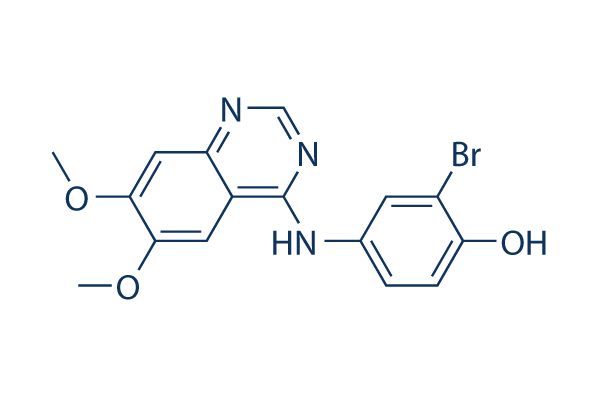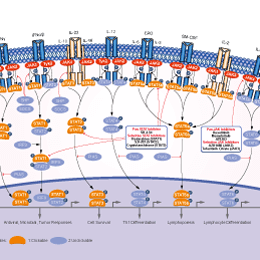
- Bioactive Compounds
- By Signaling Pathways
- PI3K/Akt/mTOR
- Epigenetics
- Methylation
- Immunology & Inflammation
- Protein Tyrosine Kinase
- Angiogenesis
- Apoptosis
- Autophagy
- ER stress & UPR
- JAK/STAT
- MAPK
- Cytoskeletal Signaling
- Cell Cycle
- TGF-beta/Smad
- DNA Damage/DNA Repair
- Compound Libraries
- Popular Compound Libraries
- Customize Library
- Clinical and FDA-approved Related
- Bioactive Compound Libraries
- Inhibitor Related
- Natural Product Related
- Metabolism Related
- Cell Death Related
- By Signaling Pathway
- By Disease
- Anti-infection and Antiviral Related
- Neuronal and Immunology Related
- Fragment and Covalent Related
- FDA-approved Drug Library
- FDA-approved & Passed Phase I Drug Library
- Preclinical/Clinical Compound Library
- Bioactive Compound Library-I
- Bioactive Compound Library-Ⅱ
- Kinase Inhibitor Library
- Express-Pick Library
- Natural Product Library
- Human Endogenous Metabolite Compound Library
- Alkaloid Compound LibraryNew
- Angiogenesis Related compound Library
- Anti-Aging Compound Library
- Anti-alzheimer Disease Compound Library
- Antibiotics compound Library
- Anti-cancer Compound Library
- Anti-cancer Compound Library-Ⅱ
- Anti-cancer Metabolism Compound Library
- Anti-Cardiovascular Disease Compound Library
- Anti-diabetic Compound Library
- Anti-infection Compound Library
- Antioxidant Compound Library
- Anti-parasitic Compound Library
- Antiviral Compound Library
- Apoptosis Compound Library
- Autophagy Compound Library
- Calcium Channel Blocker LibraryNew
- Cambridge Cancer Compound Library
- Carbohydrate Metabolism Compound LibraryNew
- Cell Cycle compound library
- CNS-Penetrant Compound Library
- Covalent Inhibitor Library
- Cytokine Inhibitor LibraryNew
- Cytoskeletal Signaling Pathway Compound Library
- DNA Damage/DNA Repair compound Library
- Drug-like Compound Library
- Endoplasmic Reticulum Stress Compound Library
- Epigenetics Compound Library
- Exosome Secretion Related Compound LibraryNew
- FDA-approved Anticancer Drug LibraryNew
- Ferroptosis Compound Library
- Flavonoid Compound Library
- Fragment Library
- Glutamine Metabolism Compound Library
- Glycolysis Compound Library
- GPCR Compound Library
- Gut Microbial Metabolite Library
- HIF-1 Signaling Pathway Compound Library
- Highly Selective Inhibitor Library
- Histone modification compound library
- HTS Library for Drug Discovery
- Human Hormone Related Compound LibraryNew
- Human Transcription Factor Compound LibraryNew
- Immunology/Inflammation Compound Library
- Inhibitor Library
- Ion Channel Ligand Library
- JAK/STAT compound library
- Lipid Metabolism Compound LibraryNew
- Macrocyclic Compound Library
- MAPK Inhibitor Library
- Medicine Food Homology Compound Library
- Metabolism Compound Library
- Methylation Compound Library
- Mouse Metabolite Compound LibraryNew
- Natural Organic Compound Library
- Neuronal Signaling Compound Library
- NF-κB Signaling Compound Library
- Nucleoside Analogue Library
- Obesity Compound Library
- Oxidative Stress Compound LibraryNew
- Plant Extract Library
- Phenotypic Screening Library
- PI3K/Akt Inhibitor Library
- Protease Inhibitor Library
- Protein-protein Interaction Inhibitor Library
- Pyroptosis Compound Library
- Small Molecule Immuno-Oncology Compound Library
- Mitochondria-Targeted Compound LibraryNew
- Stem Cell Differentiation Compound LibraryNew
- Stem Cell Signaling Compound Library
- Natural Phenol Compound LibraryNew
- Natural Terpenoid Compound LibraryNew
- TGF-beta/Smad compound library
- Traditional Chinese Medicine Library
- Tyrosine Kinase Inhibitor Library
- Ubiquitination Compound Library
-
Cherry Picking
You can personalize your library with chemicals from within Selleck's inventory. Build the right library for your research endeavors by choosing from compounds in all of our available libraries.
Please contact us at info@selleckchem.com to customize your library.
You could select:
- Antibodies
- Bioreagents
- qPCR
- 2x SYBR Green qPCR Master Mix
- 2x SYBR Green qPCR Master Mix(Low ROX)
- 2x SYBR Green qPCR Master Mix(High ROX)
- Protein Assay
- Protein A/G Magnetic Beads for IP
- Anti-Flag magnetic beads
- Anti-Flag Affinity Gel
- Anti-Myc magnetic beads
- Anti-HA magnetic beads
- Poly DYKDDDDK Tag Peptide lyophilized powder
- Protease Inhibitor Cocktail
- Protease Inhibitor Cocktail (EDTA-Free, 100X in DMSO)
- Phosphatase Inhibitor Cocktail (2 Tubes, 100X)
- Cell Biology
- Cell Counting Kit-8 (CCK-8)
- Animal Experiment
- Mouse Direct PCR Kit (For Genotyping)
- New Products
- Contact Us
research use only
WHI-P154 JAK inhibitor
WHI-P154 is a potent JAK3 inhibitor with IC50 of 1.8 μM, no activity against JAK1 or JAK2, also inhibits EGFR, Src, Abl, VEGFR and MAPK, prevents Stat3, but not Stat5 phosphorylation.

Chemical Structure
Molecular Weight: 376.2
Purity & Quality Control
Batch:
S286701
DMSO]75 mg/mL]false]Water]Insoluble]false]Ethanol]Insoluble]false
Purity:
99.77%
99.77
Related Products
| Related Targets | JAK1 JAK2 JAK3 Tyk2 | Click to Expand |
|---|---|---|
| Related Products | AZD1480 WP1066 Momelotinib (CYT387) Filgotinib (GLPG0634) AT9283 Gandotinib (LY2784544) TG101209 Cerdulatinib (PRT062070) hydrochloride Pacritinib NVP-BSK805 2HCl FLLL32 Decernotinib (VX-509) CEP-33779 AZ 960 Cerdulatinib (PRT062070) ZM 39923 HCl XL019 BMS-911543 Curcumol Solcitinib | Click to Expand |
| Related Compound Libraries | Kinase Inhibitor Library FDA-approved Drug Library Natural Product Library Tyrosine Kinase Inhibitor Library JAK/STAT compound library | Click to Expand |
Signaling Pathway
Mechanism of Action
| Targets |
|
|---|
In vitro |
||||
| In vitro | WHI-P154 is first described as a JAK3 inhibitor that displays no activity at JAK1 or JAK2. This compound inhibits STAT1 activation, iNOS expression and NO production in macrophages in vitro. But it is proved that this chemical also inhibits other common kinases including EGFR, Src, Abl, VEGFR, MAPK and PI3-K and induces apoptosis in human glioblastoma cell lines. [1] It inhibits glioblastoma cell adhesion and migration in the context of ECM.[2] This compound exhibits significant cytotoxicity against U373 and U87 human glioblastoma cell lines, causing apoptotic cell death at micromolar concentrations. The in vitro antiglioblastoma activity of this chemical is amplified > 200-fold and rendered selective by conjugation to recombinant human epidermal growth factor (EGF). In vitro treatment with EGF-P154 results killing of glioblastoma cells at nanomolar concentrations with an IC50 of 813 nM, whereas no cytotoxicity against EGF-R-negative leukemia cellsis observed, even at concentrations as high as 100 mM.[3] | |||
|---|---|---|---|---|
| Kinase Assay | Kinase assays | |||
| WHI-P154 is tested in kinase assays. The panel of kinases is selected to broadly cover the kinome, providing a good approximation of specificity. For all kinases, recombinant rat (IKKβ) or human (all others), full-length or GST-kinase domain fusion proteins, are used. This compound is inactive (concentration that inhibits response by 50% [IC50] > 30 μM) for the following kinases: AKT, AuroraA, cdk2, cdk6, CHK1, FGFR1, GSK3b, IKKb, IKKi, INSR, MAPK1, MAPKAP-K2, MASK, MET, PAK4, PDK1, PKCb, ROCK1, TaoK3, TrkA. | ||||
| Cell Research | Cell lines | U87, U737 | ||
| Concentrations | 0.1-250 μM | |||
| Incubation Time | 24-36 h | |||
| Method | Cells are seeded into a 96-well plate at a density of 2.5×104 cells/well and incubated for 36 h at 37 ℃ before drug exposure. On the day of treatment, culture medium is carefully aspirated from the wells and replaced with fresh medium containing the quinazoline compounds WHI-P154 at concentrations ranging from 0.1 μM to 250 μM. Triplicate wells are used for each treatment. The cells are incubated with this compound for 24hours to 36hours at 37 ℃ in a humidified 5% CO2 atmosphere. To each well, 10 μL of MTT (final concentration, 0.5 mg/mL) is added, and the plate are incubated at 37 ℃ for 4 h. Than solubilized overnight at 37 ℃ in a solution containing 10% SDS in 0.01 M HCL. The absorbance of each well is measured in a microplate reader at 570 nm. | |||
In Vivo |
||
| In vivo | The in vivo administration of EGF-P154 results in delayed tumor progression and improved tumor-free survival in a severe combined immunodeficient mouse glioblastoma xenograft model. Whereas none of the control mice remain alive tumor-free beyond 33 days (median tumor-free survival, 19 days) and all control mice have tumors that rapidly progress to reach an average size of > 500 mm3 by 58 days, 40% of mice treated for 10 consecutive days with 1 mg/kg/day this compound remain alive and free of detectable tumors for more than 58 days with a median tumor-free survival of 40 days. The tumors developing in the remaining 60% of the mice never reache a size > 50 mm3.[3] | |
|---|---|---|
| Animal Research | Animal Models | SCID Xenograft Model of Human Glioblastoma (U737) |
| Dosages | 0.5 mg/kg or 1 mg/kg for 10 days | |
| Administration | i.p. | |
References |
|
Chemical Information
| Molecular Weight | 376.2 | Formula | C16H14BrN3O3 |
| CAS No. | 211555-04-3 | SDF | Download SDF |
| Synonyms | N/A | ||
| Smiles | COC1=C(C=C2C(=C1)C(=NC=N2)NC3=CC(=C(C=C3)O)Br)OC | ||
Storage and Stability
| Storage (From the date of receipt) | |||
|
In vitro |
DMSO : 75 mg/mL ( (199.36 mM) Moisture-absorbing DMSO reduces solubility. Please use fresh DMSO.) Water : Insoluble Ethanol : Insoluble |
Molecular Weight Calculator |
|
In vivo Add solvents to the product individually and in order. |
In vivo Formulation Calculator |
|||||
Preparing Stock Solutions
Molarity Calculator
In vivo Formulation Calculator (Clear solution)
Step 1: Enter information below (Recommended: An additional animal making an allowance for loss during the experiment)
mg/kg
g
μL
Step 2: Enter the in vivo formulation (This is only the calculator, not formulation. Please contact us first if there is no in vivo formulation at the solubility Section.)
% DMSO
%
% Tween 80
% ddH2O
%DMSO
%
Calculation results:
Working concentration: mg/ml;
Method for preparing DMSO master liquid: mg drug pre-dissolved in μL DMSO ( Master liquid concentration mg/mL, Please contact us first if the concentration exceeds the DMSO solubility of the batch of drug. )
Method for preparing in vivo formulation: Take μL DMSO master liquid, next addμL PEG300, mix and clarify, next addμL Tween 80, mix and clarify, next add μL ddH2O, mix and clarify.
Method for preparing in vivo formulation: Take μL DMSO master liquid, next add μL Corn oil, mix and clarify.
Note: 1. Please make sure the liquid is clear before adding the next solvent.
2. Be sure to add the solvent(s) in order. You must ensure that the solution obtained, in the previous addition, is a clear solution before proceeding to add the next solvent. Physical methods such
as vortex, ultrasound or hot water bath can be used to aid dissolving.
Tech Support
Answers to questions you may have can be found in the inhibitor handling instructions. Topics include how to prepare stock solutions, how to store inhibitors, and issues that need special attention for cell-based assays and animal experiments.
Tel: +1-832-582-8158 Ext:3
If you have any other enquiries, please leave a message.
* Indicates a Required Field






































